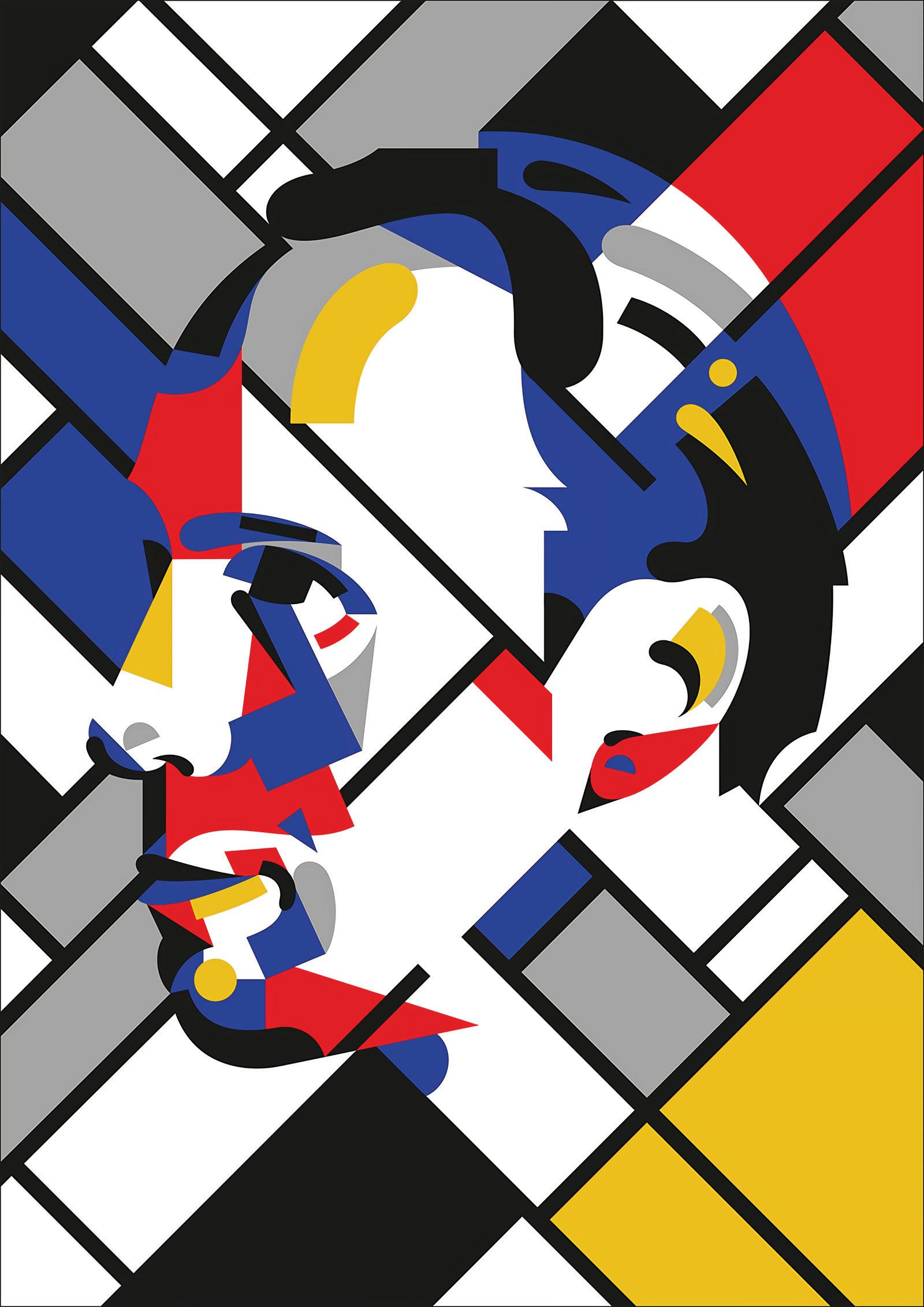
4 minute read
Key Player
Van Doesberg and Modnrian are their artistic careers who learn more towards cubism, the date of the art movement between 1908 and 1914 which depicted natural forms as structures and geometric plans. However, both of them found that it did not fit into these ideas. For them, being more abstract is seen as verifying art, exchanging subjects and shapes for horizontal and vertical elements, mainly using primary colors as well as black, gray and white. They exchange all comprehensive subject traces for complete and total abstraction. They want to create utopia with an imaginary speed that they think is effective, and they feel this is a way that often expresses themselves abstractly.
De Stijl artists see their work as a language outside of culture, geography and politics, which makes it feel disparaged and anonymous. They feel that artists must take a back seat in their work, allowing viewers to make their own different opinions about the style they are making.
Advertisement
Theo Van Doesburg.
Theo van Doesburg, or Christian Emil Marie Upper as he was originally known, was born in Utrecht on 30th August 1883 as the son of photographer Wilhelm Upper and Henrietta Catherina Margadant. Although van Doesburg intended to pursue a career in theatre, by around 1900 he turned his interest to painting. His earlier work was in line with the Amsterdam impressionists and was massively influenced by Vincent van Gogh, both in style and matter. In 1913, after reading Wassily Kandinsky's Riickblicke, he realised there was a higher, more spiritual level in painting that originates from the mind, not just everyday life, and that abstraction is the only logical outcome of this. In 1915, (half way through his two-year service in the army), van Doesburg came in contact with Piet Mondrian whilst reviewing an exposition for a magazine he wrote for. Mondrian had already gained attention with his paintings, which involved the complete abstraction of reality. Van Doesburg saw his ideal style of painting in Mondrianis work. Soon after the exposition, van Doesburg got in contact with Mondrian and founded the magazine, names De Stijl in 1917 along with Bart van der Leck, Anthony Kok and J.J.P Oud.

Rietveld
Dutch furniture designer and architect, Gerrit Thomas Rietveld was born on 24th June 1888 in Utrecht where he lived and worked for all of his life. Rietveld started working for his father, who taught him how to make his first cabinet. By 1911, he had left the family workshop and trained as an architectural draughtsman, before finally becoming an architect in 1919. During this time Rietveldis famous Red & Blue chair was designed. Nothing like this had been seen or existed before, it marked the transition between the organic Art Noveau style, and the crisp Art Deco. The structure and colour of the chair is a reminder of paintings by Mondrian.
Rietveld joined the De Stijl collective around the same time the chair was created. It sums up the radical principles of the influential art movement with its simple forms and primary colours. In 1924 he designed his first building the Rietveld-Schroder House in close collaboration with the owner Truus Schroder-Schrader. The house was said to be a three dimensional realization of a Mondrianis paintings and the De Stijl aesthetic. The ground floor was a conventional design, but

Mondrian.
Mondrian was named Pieter Cornelis Mondriaan Jr at birth on 7th March 1872 in Amersfoort. He studied at the Rijksakademie van Beeldende Kunsten (Amsterdam Academy of Fine Arts), from 1892 to 1897. Mondrian's work was naturalistic which incorporated successive influences of academic landscape and still-life painting. By 1911, he began to work with a Cubist style after seeing original Cubist works by Georges Braque and Pablo Picasso. Mondrian. He decided to move to Paris in 1912, where he changed his name to Mondrian, from Mondriaan, which emphasized his departure from an artistic life in Holland by dropping the 'a. While in Paris, the influence of Cubism and its artists made Mondrian develop an independent abstract style.
Mondrian was visiting the Netherlands when the First World War broke out, which prevented his return to Paris. During these years in Holland, his work showed a complete reduction in the use of certain colours and geometric shapes to formulated his own non-objective Neoplastic style. Then in 1917, after meeting van Doesburg, he became one of the founders of De Stijl, where he fully embraced the principles of pure abstraction and simplification. Many of Mondrian's essays on abstract art were published in the periodical De Stijl magazine. Then by July 1919, he had returned to Paris. He later exhibited his work in 1923. Although the friendship between Mondrian and van Doesburg was strong through the years, letters were the only form of communication. When coming in contact with each other in Paris, they started noticing their differences in character.






